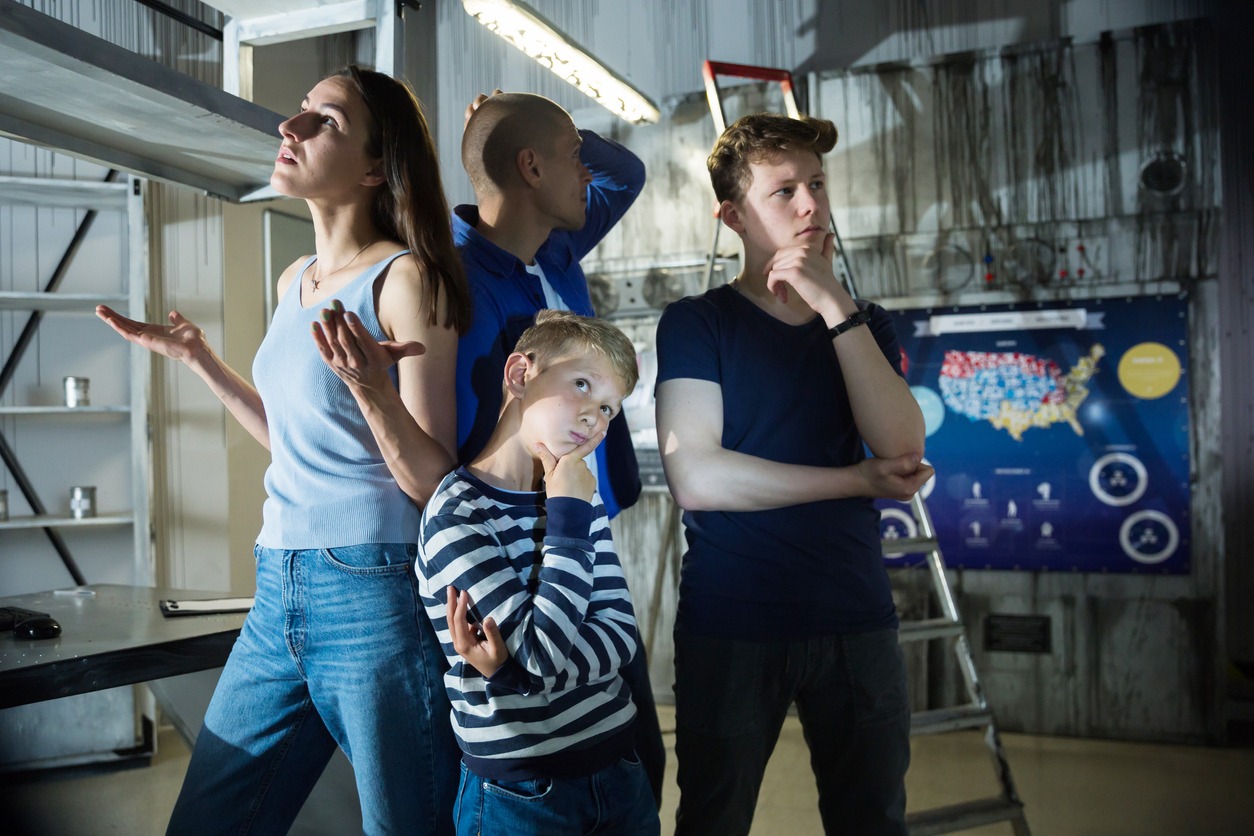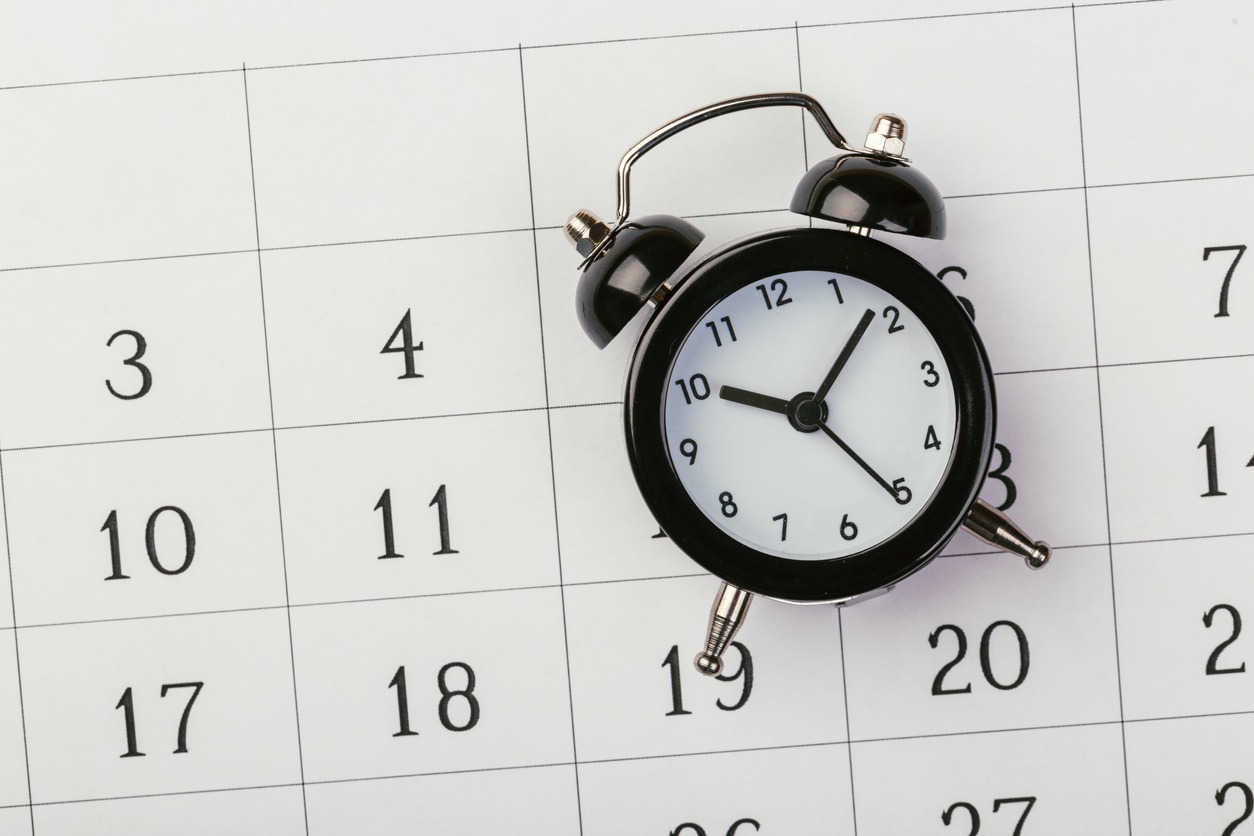Mystery and escape room parties are fun and brain-teasing get-togethers where people team up to solve puzzles in themed settings. These puzzles often come with a time limit and a specific mission, like escaping from a pretend situation or uncovering secrets. A Game Master is there to guide and help out when needed. Escape rooms can have different themes, like castles or space stations, and the goal is to solve puzzles within a certain time. Besides being entertaining, these parties also boost teamwork and problem-solving skills.
In this comprehensive guide, we will walk you through how best to organize escape room parties. From selecting the perfect theme that sets the tone to meticulously planning every detail, crafting challenging puzzles, and creating an immersive atmosphere, this guide will help you organize an event your guests will cherish. We’ll explore themes, party planning, puzzle creation, atmosphere setting, essential components, and how to make “The Big Day” an exciting adventure for everyone involved.
Choosing the Right Theme
When organizing a mystery or escape room party, one of the most crucial decisions you’ll make is selecting the right theme. Themes not only set the tone for your event but also add depth and intrigue to the experience. Let’s explore three popular theme options: Mystery Themes, Adventure Themes, and Historical Themes:
- Mystery Themes – Mystery themes are an excellent choice for those who enjoy unraveling enigmatic puzzles and solving riddles. These themes often revolve around a compelling storyline or unsolved mystery. The room might be designed as a crime scene, a haunted house, or a detective’s office, and participants must use their deductive reasoning skills to piece together the clues. In a mystery-themed escape room, you might encounter cryptic notes, hidden messages, or mysterious objects that gradually reveal the narrative.
- Adventure Themes – For those seeking an adrenaline rush and a sense of adventure, adventure themes are an ideal choice. These themes transport participants to exotic locations, mythical worlds, or action-packed scenarios. You might find yourself in a treasure-filled cave, on a daring quest, or even in a space station facing an impending disaster. Adventure-themed escape rooms emphasize problem-solving and physical interaction with the environment. Participants often need to decipher maps, solve physical puzzles, or navigate obstacles to progress through the storyline.
- Historical Themes – Historical themes offer a unique opportunity to travel back in time and explore different eras. These themes recreate historical settings, from ancient civilizations to the Victorian era or even the Wild West. The attention to detail in historical escape rooms is remarkable, immersing participants in a bygone world. You may be tasked with deciphering hieroglyphics in an Egyptian tomb, unraveling political conspiracies in a medieval castle, or solving a Wild West mystery. Historical-themed escape rooms provide a rich learning experience while challenging participants to adapt to the customs and technologies of the past.
Planning the Party
When organizing a mystery and escape room party, meticulous planning is key to ensuring a memorable and enjoyable event for your guests. Let’s delve into the essential aspects of party planning, including:
Guest List and Invitations
Begin your party planning by crafting a guest list and sending out invitations. Consider the size of the room or rooms you’ve chosen for the game when finalizing the guest list. It’s essential to ensure that there’s enough space for your guests to move comfortably as they search for clues and work together. Craft your invitations in a way that sets the mood for the escape room adventure, keeping in mind the chosen theme and setting. You can either print physical invitations or opt for digital versions, depending on your preferences and your guests’ convenience.
Setting the Date and Time
Selecting the perfect date and time for your escape room party is crucial to maximize attendance and create a seamless experience. Make sure to coordinate with your potential guests to find a date that works for everyone. Additionally, consider the duration of the party. If it’s your first time organizing an escape room, it’s wise to set a reasonable time limit, such as 30 minutes, to prevent feeling overwhelmed and to ensure your guests are entertained throughout. However, for experienced escape room enthusiasts, you can extend the time and complexity of the game to provide a more challenging experience.
Budgeting and Expenses
Escape room parties can be a cost-effective way to celebrate various occasions. You have the flexibility to choose how much you’d like to spend on props, decorations, and invitations. Decide on a budget that fits your financial plan and stick to it. Keep in mind that DIY escape room parties are known for their affordability. By designing your own challenges and utilizing creative solutions for themed decorations, you can keep expenses to a minimum while delivering a fantastic experience for your guests.
Venue Selection
One of the most critical decisions is selecting the right venue for your escape room party. If you have ample space in your home, consider using multiple rooms that are adjacent to each other. This allows your guests to “unlock” doors as they progress through the game, adding an extra layer of excitement. Your chosen setting and theme should align with the venue, ensuring that the space enhances the immersive experience. Whether you opt for a historical, adventurous, or mysterious theme, make sure the venue complements the chosen narrative and setting to create an unforgettable escape room party.
Crafting Puzzles and Challenges
Creating captivating puzzles and challenges is the cornerstone of organizing an enjoyable mystery and escape room experience. Below are the key elements of crafting these enigmatic puzzles and challenges:
Creating Clues and Riddles:
Begin your puzzle creation journey by weaving a storyline that seamlessly fits the theme and setting of your escape room. This storyline acts as the backbone of your adventure, providing players with a compelling narrative context and a clear sense of purpose. While some participants may not be deeply invested in the story, a cohesive and engaging narrative can greatly enhance the overall experience. Opt for broader themes to ensure your puzzles appeal to a wider audience, avoiding themes that might alienate potential players.
Divide your storyline into manageable, bite-sized pieces. Each segment should be comprehensible and not overly complex. Craft a flowchart to chart the players’ progression through the story, ensuring that each part flows seamlessly into the next. Crucially, include instructions or clues following the resolution of each puzzle, serving as guiding beacons through the narrative’s progression.
Puzzle Design and Difficulty Levels:
When envisioning the challenges for your escape room, take into account the experience level of your participants. For newcomers to escape rooms, focus on designing simpler challenges. For more seasoned groups, introduce more intricate and demanding puzzles. Remember, the quantity of challenges matters less than the difficulty level itself. Strive for puzzles that strike a balance between being solvable and challenging, always aligning them with your chosen theme to maintain narrative consistency.
For larger groups, consider implementing multiple simultaneous challenges to ensure everyone stays engaged and entertained. In the case of children’s groups, concentrate on puzzles that smoothly transition into one another, minimizing downtime and keeping young participants captivated.
Storyline Development
Embed the challenges seamlessly within your storyline, ensuring that each challenge serves as a catalyst for advancing the narrative. For each challenge integrated into the storyline, devise a corresponding puzzle that participants can solve within the allotted time. Guarantee that the solution to each challenge propels players to the next stage of the story, preserving the narrative’s coherence.
To add an extra layer of complexity and intrigue, introduce locks that require puzzle-solving to open. These locks can take the form of padlocks, bike locks, or small safes. The key to opening these locks should be the solution to a puzzle, revealing the next vital clue. Furthermore, discreetly hide information in plain sight by incorporating concealed codes on room objects. Players must decipher these codes to unlock locks or access additional essential information.
Testing and Refinement
Prior to hosting your escape room adventure, comprehensive testing and refinement are imperative. Enlist the aid of friends or family to serve as playtesters and evaluate the challenges, puzzles, and storyline. Verify that each part of the story flows seamlessly into the next, supported by clear instructions or clues that guide participants. Adapt or adjust any elements that prove excessively challenging or perplexing during the testing phase.
Furthermore, explore a variety of puzzle types, such as invisible ink, combination locks, hidden messages, and interactive elements like mirrors or balloons, to maintain a diverse and engaging experience for participants. The ultimate goal is to construct a well-rounded and immersive escape room that offers an enjoyable challenge without overwhelming your guests.
Setting the Atmosphere
When organizing a mystery and escape room party, creating an immersive atmosphere is crucial to captivate your guests and make the experience unforgettable. This can be achieved by focusing on three key aspects:
Decorations and Ambiance:
The first step in creating an atmosphere is transforming your venue to transport your guests to another world. Start with clever lighting choices, such as blacking out windows and introducing colored, flickering, or irregular lighting. The play of light can quickly change a familiar space into a mysterious environment. Moreover, consider the powerful effect of darkness; turning off the lights disorients players and rearranging furniture convinces them they’re in an unfamiliar room. Providing flashlights further enhances the sense of exploration.
To complete the ambiance, the use of music is paramount. The soundscape plays a vital role in setting the mood. Replace everyday sounds with eerie, mysterious, or ambient music to make the atmosphere feel entirely new. Platforms like Spotify and YouTube offer a plethora of atmospheric playlists to choose from.
Lighting and Sound Effects:
One of the most critical elements for an escape room is the quality of the set and atmosphere. The setting should be well-designed, detailed, and realistic. It should immerse the players in the theme, and there should be a clear distinction between game elements and non-game elements. A carefully constructed environment sets the stage for a successful experience.
Costumes and Props:
While there isn’t a strict dress code for escape rooms, your outfit can significantly impact your experience. Closed-toed shoes are a must to protect your feet while exploring and prevent distractions. Comfortable, loose-fitting clothing is essential for freedom of movement, as players may need to climb, crawl, or crouch. If you wear glasses, consider switching to contacts, as they are less worrisome inside the room. Avoid wearing heels, sandals, tight or short clothing, and expensive garments that could be damaged. Jewelry and accessories should be minimal to prevent them from catching on objects or hurting you. Ultimately, choose an outfit that makes you feel comfortable and confident so that you can fully engage with the escape room’s challenges without distractions.
Party Essentials
Essential components that can elevate the experience for your guests and ensure a successful event, including:
Hosting Team or Game Master:
Having a dedicated hosting team or a skilled Game Master is crucial to ensure that the party runs smoothly. The Game Master serves as the guide and facilitator of the escape room experience. They provide instructions, hints, and clues to players, ensuring they understand the rules and objectives of the game. A proficient Game Master can enhance the immersion and excitement of the escape room by maintaining the storyline and offering assistance when needed. This role is essential for keeping the game on track, answering questions, and providing hints without giving away too much, ensuring that the players have an enjoyable and challenging experience.
Safety and Emergency Plan:
While escape rooms are designed for fun and adventure, it’s essential to prioritize safety. Establishing a clear safety and emergency plan is a must. Ensure that your venue adheres to safety regulations and is equipped with necessary safety features, such as fire exits and first-aid kits. Communicate these safety measures to your guests at the start of the event. In case of any emergencies or unforeseen situations, the hosting team should know how to guide the participants to safety. It’s also advisable to inform players about the location of emergency exits and what to do in case of an evacuation. Safety should always be a top priority to guarantee a worry-free and enjoyable experience for everyone.
Prizes and Rewards:
To make your mystery and escape room party more exciting, consider offering prizes and rewards to the participants. Recognizing and rewarding successful teams or individuals can enhance the competitive spirit and motivation to solve the puzzles. Prizes could include gift cards, small trophies, or even custom-themed souvenirs related to the escape room’s storyline. Moreover, you can present participants with certificates of completion to commemorate their achievements. Prizes and rewards not only add an extra layer of enjoyment to the event but also create a sense of accomplishment among your guests.
The Big Day
Organizing mystery and escape room parties is an exciting endeavor, but the success of the event hinges on how you manage “The Big Day.” Here are the essential aspects to consider for a smooth and engaging escape room experience:
Welcoming Guests:
As the host of your mystery and escape room party, it’s crucial to create a welcoming atmosphere for your guests. Ensure they feel comfortable and excited about the upcoming adventure. Greet each participant warmly and provide a brief overview of what to expect during the event. Make it clear that asking for help is perfectly acceptable and encouraged, especially when the team encounters challenging puzzles. This fosters a collaborative and engaging environment, ensuring that everyone remains fully immersed in the game.
Rules and Guidelines:
To ensure that the escape room experience runs smoothly, establish clear rules and guidelines. Communicate the basic principles of the game, emphasizing the importance of teamwork, problem-solving, and adhering to the storyline. Encourage participants to consult the Game Master or any provided clue sheets when they face difficulties. Highlight the need for focus and perseverance, as well as the requirement to respect the rules of the game. By setting these guidelines, you create a structured and enjoyable experience for all involved.
Group Formation:
Organizing participants into effective groups is a pivotal step. Depending on the size of your party, divide the attendees into teams that can work cohesively. Encourage diversity within these groups to foster creative problem-solving tactics. Balancing strengths and weaknesses among team members can lead to a more fulfilling experience. Make sure to keep an eye on the dynamics within each group, ensuring that all participants are actively engaged and no one feels left out.
The Game Begins:
Once your guests are grouped and ready to embark on the escape room adventure, the game begins. Encourage them to fully engage with the storyline and the challenges presented. Remind participants that seeking the Game Master’s assistance or utilizing provided clues is an integral part of the game. Maintain a sense of enthusiasm throughout the event, as this will enhance the overall enjoyment for your guests.
Conclusion:
The success of your mystery and escape room party rests on your ability to create a welcoming atmosphere, set clear rules and guidelines, form effective groups, and maintain the excitement as the game unfolds. By focusing on these key elements during “The Big Day,” you can ensure a memorable and immersive experience for your guests, leaving them with a sense of accomplishment and camaraderie that extends beyond the escape room itself.






